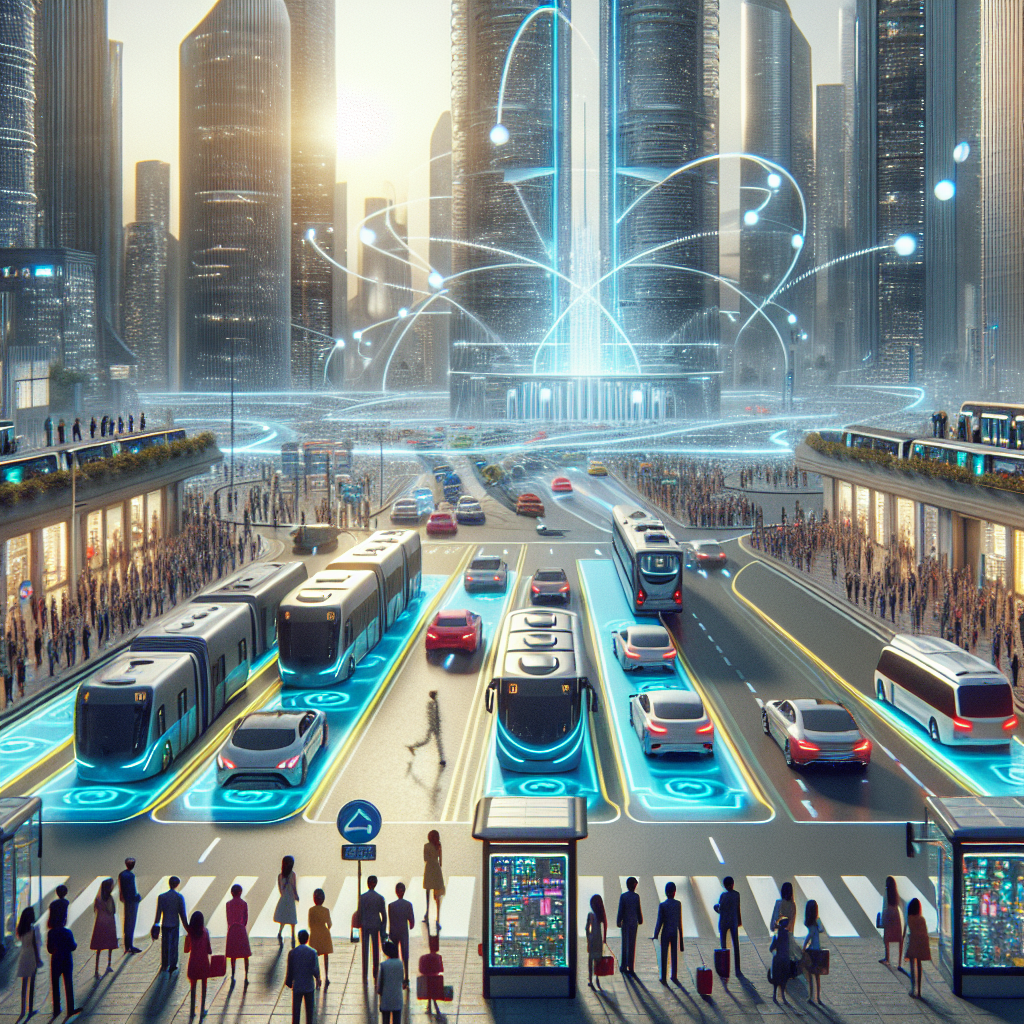AI Development in Transportation: Improving Efficiency and Safety in Public Transit with Traffic Management Systems and Autonomous Vehicles
The transportation industry is constantly evolving with the advancements in technology. One of the most significant developments in recent years is the integration of artificial intelligence (AI) in transportation systems. AI has brought about a transformation in the way we travel, making public transit more efficient and safer for passengers.
One of the key areas where AI is making a significant impact in transportation is in traffic management systems. These systems use AI algorithms to analyze traffic patterns, predict congestion, and optimize traffic flow. By collecting data from various sources such as traffic cameras, sensors, and GPS devices, AI can provide real-time information to traffic controllers and help them make informed decisions to alleviate congestion and reduce travel time for commuters.
Traffic management systems powered by AI can also help in predicting accidents and identifying potential bottlenecks on the road. By analyzing historical data and patterns, AI algorithms can alert authorities about potential hazards in advance, enabling them to take proactive measures to prevent accidents and ensure the safety of passengers.
Another area where AI is revolutionizing transportation is in the development of autonomous vehicles. These vehicles are equipped with sensors, cameras, and AI algorithms that enable them to navigate roads, detect obstacles, and make decisions without human intervention. Autonomous vehicles have the potential to revolutionize public transit by reducing accidents, improving traffic flow, and enhancing the overall passenger experience.
By eliminating human error, autonomous vehicles can significantly reduce the number of accidents on the road. According to a study by the National Highway Traffic Safety Administration, human error is a factor in 94% of all traffic accidents. By replacing human drivers with AI-driven systems, autonomous vehicles can potentially save thousands of lives each year and reduce the economic costs associated with accidents.
In addition to improving safety, autonomous vehicles can also enhance efficiency in public transit systems. By optimizing routes, reducing congestion, and minimizing travel time, autonomous vehicles can provide a more seamless and convenient travel experience for passengers. These vehicles can also help in reducing emissions and fuel consumption, contributing to a more sustainable transportation system.
The integration of AI in transportation is not without its challenges. One of the major concerns is the ethical implications of AI-driven systems, particularly in the context of autonomous vehicles. Questions about liability, accountability, and privacy have been raised as autonomous vehicles become more prevalent on the roads. It is essential for policymakers, regulators, and industry stakeholders to address these concerns and develop guidelines to ensure the safe and ethical deployment of AI in transportation.
Despite these challenges, the potential benefits of AI in transportation are immense. By improving efficiency, reducing accidents, and enhancing the passenger experience, AI has the power to transform public transit systems and create a more sustainable and connected transportation network.
FAQs
Q: How does AI improve efficiency in public transit systems?
A: AI algorithms can analyze traffic patterns, predict congestion, and optimize traffic flow to reduce travel time for commuters. By providing real-time information to traffic controllers, AI can help in making informed decisions to alleviate congestion and improve efficiency in public transit systems.
Q: What are the benefits of autonomous vehicles in public transit?
A: Autonomous vehicles can improve safety by reducing accidents, enhance efficiency by optimizing routes and reducing congestion, and provide a more seamless and convenient travel experience for passengers. These vehicles can also help in reducing emissions and fuel consumption, contributing to a more sustainable transportation system.
Q: What are the challenges of integrating AI in transportation?
A: One of the major challenges of integrating AI in transportation is the ethical implications, particularly in the context of autonomous vehicles. Questions about liability, accountability, and privacy have been raised as autonomous vehicles become more prevalent on the roads. It is essential for policymakers, regulators, and industry stakeholders to address these concerns and develop guidelines to ensure the safe and ethical deployment of AI in transportation.

